The launch of GPTs (smaller personal chatbots) and the GPT Store by OpenAI is one of the most significant and transformative developments for individuals and businesses. While it lasted barely an hour, OpenAI’s Demo Day unveiling these capabilities has been the talk of the town, from AI enthusiasts to tech journalists to AI startups and even AI investors.
GPTs enable anyone, most notably non-programmers, to quickly build customized AI apps powered by models like GPT4Turbo. The GPT Store, with its marketplace model, changes the way AI applications are made and distributed. Along the lines of TikTok and Youtube millionaires, the next millionaires will be GPT Builders.
In this post, I’ll provide:
- An in-depth look at how GPTs work
- Their immense benefits for businesses of all sizes
- Typical workflows to leverage them
- Current limitations to be aware of
What Exactly Are GPTs?
GPTs are more minor, specialized personal chatbot or virtual assistant instances created using the no-code OpenAI Playground. You get access to GPT Builder if you are a ChatGPT+ user (costs $20 per month). This Playground allows anyone to construct prompts and supply knowledge documents like PDFs to build customized AI assistants.
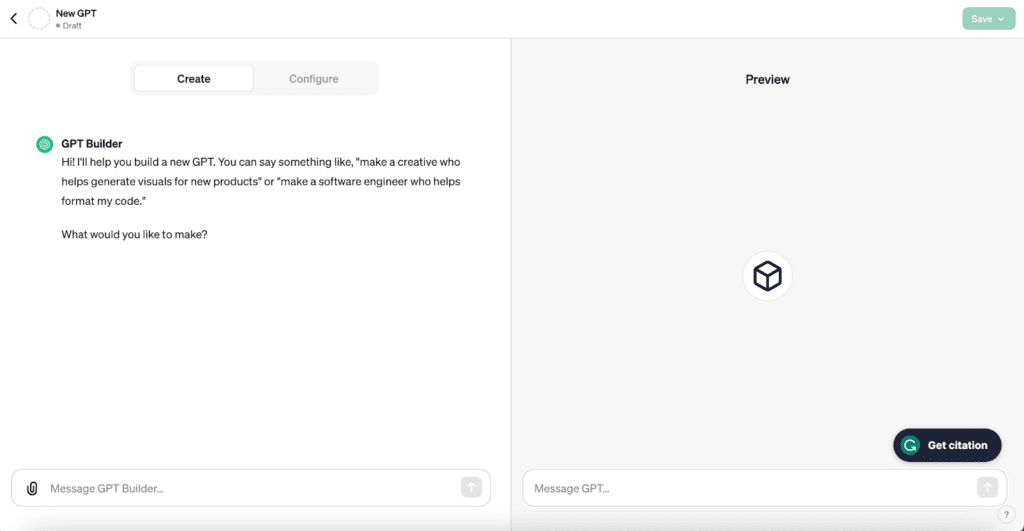
Once built, these GPTs can be shared publicly via the GPT Store that OpenAI launched or privately using the unique URL. Creators can charge users for access, creating a marketplace for AI apps (still needs to be live). GPTs remove the need to know how to code or develop complex systems to benefit from AI. This brings the power of LLM models to the masses in an accessible way.
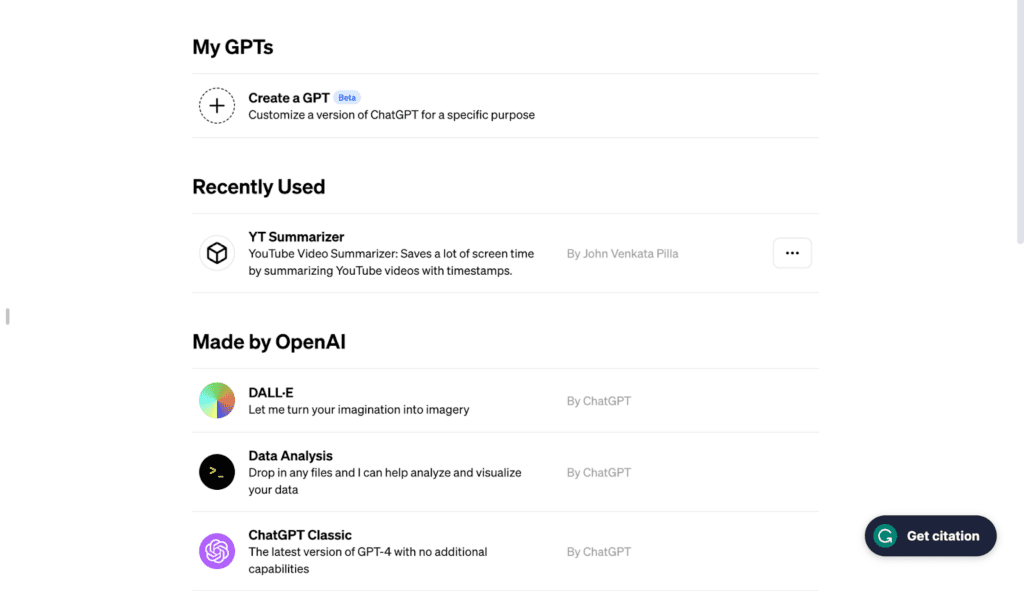
Why Are GPTs So Impactful for Business?
GPTs have the potential to impact businesses of all sizes in multiple ways profoundly:
Allow Anyone to Build AI Apps
One of the most significant limitations of advanced AI models until now has been that only skilled developers could create applications with them. That meant slow and expensive development cycles. GPTs smash this barrier by enabling anyone who can write a simple prompt – product managers, marketers, customer service reps, and administrative staff – to build customized AI apps tailored to their needs.
Rather than submitting tickets and waiting months for dev teams, any employee can prototype and experiment with AI capabilities in the afternoon. This empowers businesses to innovate faster and get more value from AI.
Below is a YouTube Summarizer GPT built by a user
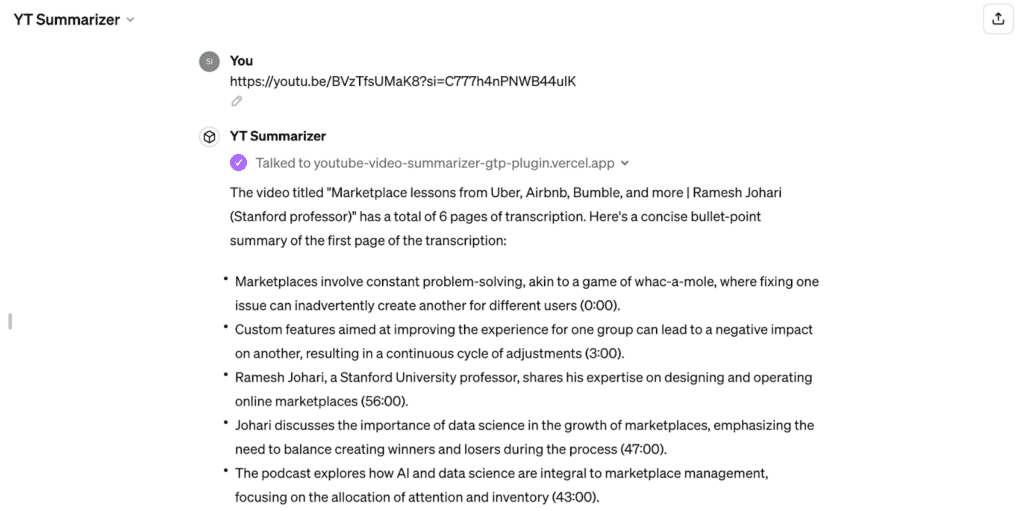
Facilitate Rapid Validation of Ideas
Another significant capability gap GPTs fill is making it fast and easy to validate ideas and concepts before investing in full production development. For example, a product manager at a retail chain may wonder if an AI stylist chatbot would help convert more online shoppers. In the past, testing this would require months of custom development work.
With GPTs, they can mock up a prototype chatbot with relevant product knowledge and fashion advice using the Playground. This can be shared with internal stakeholders and select customers to garner feedback and gauge interest before building it out.
This form of rapid validation de-risks product development and ensures efforts align with real user needs.
Level the Playing Field for Small Business
Small businesses often need help to compete with larger competitors when leveraging advanced technologies like AI. The cost and complexity of custom development is prohibitive. GPTs finally level this playing field by giving small businesses easy access to AI capabilities. A local restaurant can build its reservation assistant chatbot in hours rather than hiring consultants. A shop owner can create a virtual stylist to recommend products based on customer needs.
This democratization of AI unlocks new opportunities for small businesses to drive innovation and differentiate from competitors.
Enable New Revenue Opportunities
The GPT Store marketplace further amplifies the potential for GPTs to transform business. It incentivizes independent developers, moonlighters, and AI enthusiasts to build and monetize useful GPT apps. Rather than relying solely on in-house development, businesses can source AI capabilities from this thriving GPT app ecosystem. For everyday needs like customer support chatbots, virtual assistants, search and recommendation engines, and more, businesses can buy off-the-shelf GPTs rather than building from scratch.
This could allow faster innovation and time to focus engineering resources on core proprietary efforts. The GPT Store could foster a whole new industry of GPT app developers.
Typical Workflow for Leveraging GPTs
Here is an overview of the typical workflow for a business to harness GPTs effectively:
Identify Needs and Build Initial GPTs
The first step is to identify areas where AI capabilities could add value. Joint opportunities include improving customer engagement, automating repetitive tasks, delivering personalized recommendations, etc. With target uses in mind, relevant stakeholders can start constructing GPT prototypes that demonstrate the AI functionality using the OpenAI Playground. Focus on structuring effective prompts and providing helpful knowledge sources.
Test and Refine GPT Iteratively
Next, solicit internal feedback from colleagues and management on the initial GPTs. Identify areas for improvement. Refine the GPTs through multiple rapid iterations by tweaking prompts (you could follow popular prompting techniques like chain-of-thought, few-shot-prompting, split-summarize-rerank prompting, etc) and knowledge sources based on the feedback. Loop in external users like customers or partners to further validate performance and usability.
Rebuild for Production Needs
Once a GPT proves helpful after testing, the next step is rebuilding it for enterprise production needs like security, scalability, compliance, etc. This is where Generative AI application development platforms like Lyzr.ai, Langchain, LlamaIndex, Haystack, BentoML, etc come in handy. They make reproducing a GPT as a production-grade application easy with all the proper built-in controls. Lyzr.ai, for instance, operates at a super-abstracted SDK level and allows you to build and launch enterprise-grade GenAI apps to production in minutes.
Below is an example code to build a full-fledged RAG-enabled Knowledge QA bot.
pip install lyzr
from lyzr import qa_bot
embeddings = qa_bot.pdf_qa(filepath=filepath, llm=openai)
respsone = embeddings.query(“What is lyzr?”)
Explore all Lyzr SDKs here – https://www.lyzr.ai/sdks/
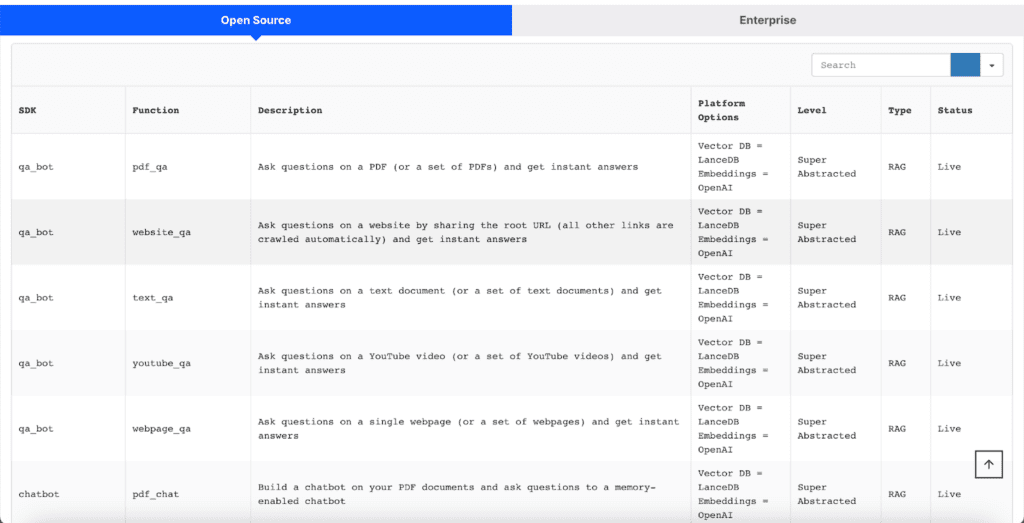
And if you are short on development capacity or need expert Generative AI consulting help, companies like GoML.io – a specialized Generative AI consulting company can help in the rapid development of the solution using the LLM mentioned above building blocks like Lyzr.ai and also help you run these production apps with 24*7 LLMOps support over a more extended period.
Explore 50+ LLM usecases here – https://llmleaderboard.goml.io/
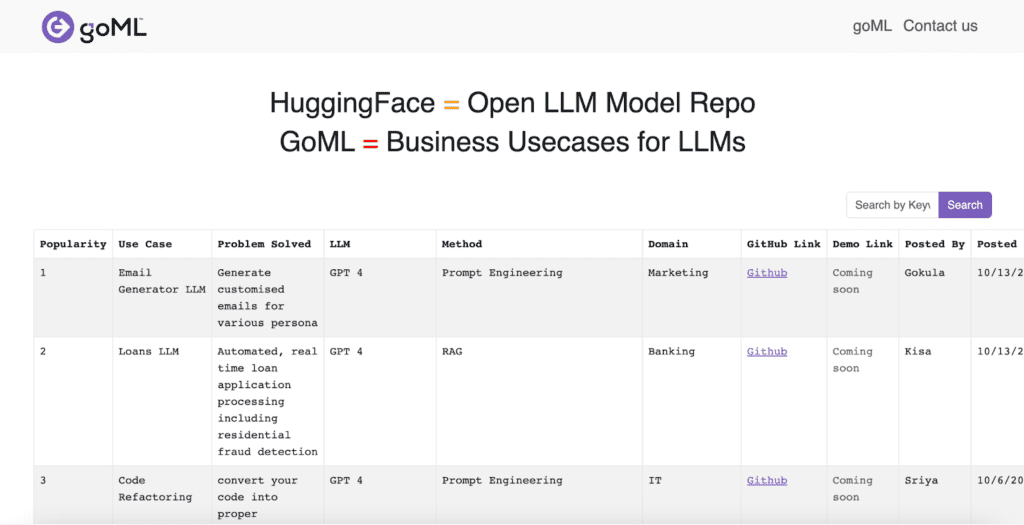
Key Limitations to Consider
As with any early-stage technology, GPTs do have some limitations businesses should be aware of:
- Overreliance on OpenAI – Currently, GPTs are locked into OpenAI’s ecosystem. There is no option to swap in or compare the performance of models from other vendors. This concentration of risk could become an issue.
- Text-based interfaces – The apps center around text-in, text-out interactions. Support for rich graphical interfaces is minimal, constraining usefulness for some applications.
- Integration challenges – Integrating GPTs into enterprise IT environments requires manual work. More seamless integration options and widgets will need to emerge.
- Rigid configuration – There is little ability currently to customize the underlying model, embeddings approach, or vector database used. More modularity and customization options will be necessary.
- Governance overhead – GPTs require ongoing monitoring and maintenance as they interact with users. Governance overhead could become burdensome at scale.
- Compliance uncertainties – Unclear how GPT behaviors like hallucinated responses may contribute to biases or affect regulation compliance. More visibility into how they arrive at responses will be critical.
The Future of GPTs: Potential Enhancements
Looking ahead, the integration of intuitive UI/UX, diversification of vector databases, and richer integrations herald the next evolution of GPTs. These are not just incremental updates; they’re the stepping stones to a future where AI is as ubiquitous as it is versatile.
Overall, GPTs are a giant leap forward in democratizing AI. Even with current limitations, they empower businesses to explore new ideas and use cases that can drive real competitive advantage. Their rapid evolution will only multiply this impact over time. The future is bright.








